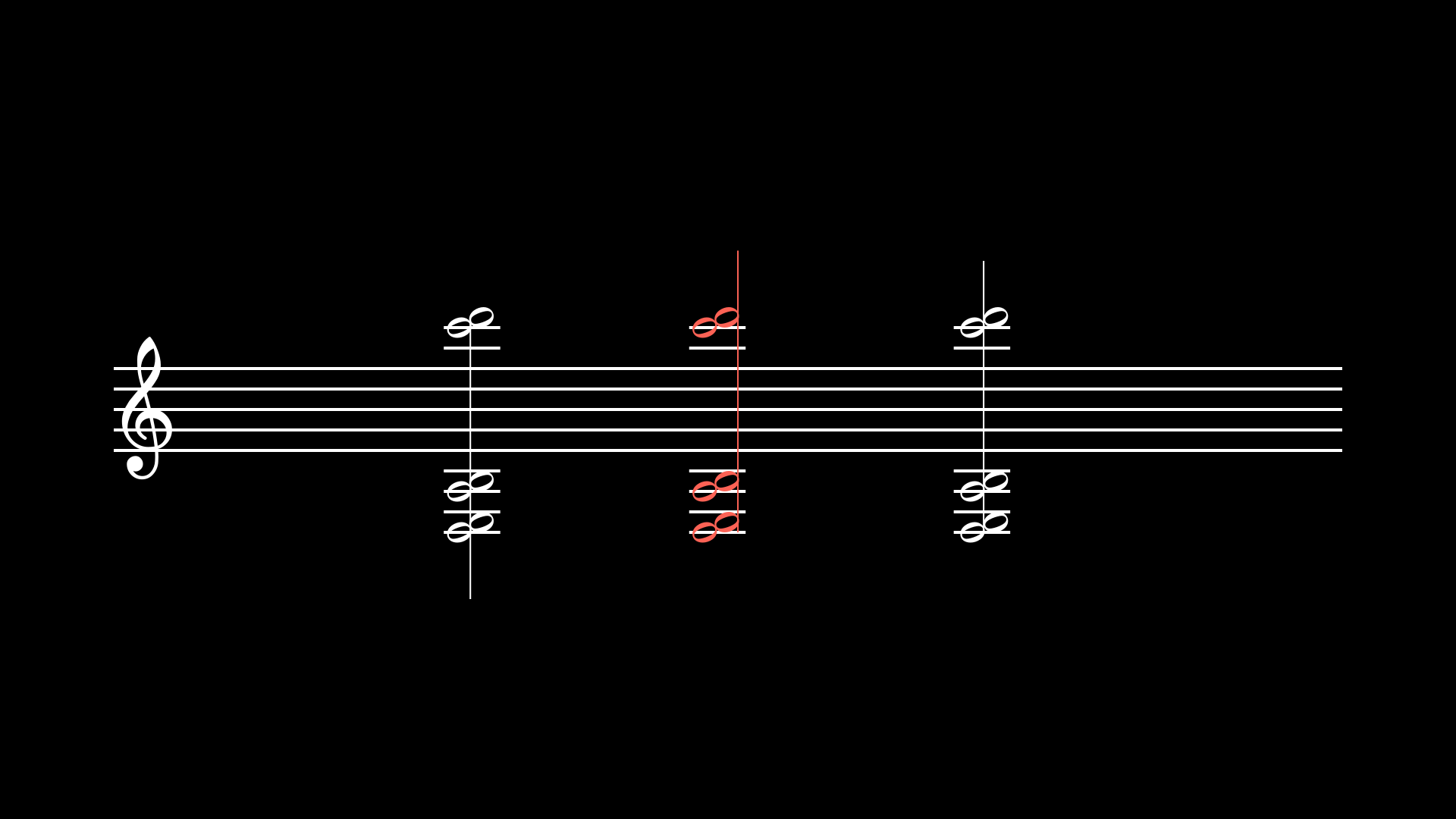Sticky notes#
[1]:
from manimusic import *
config.media_embed = True; config.media_width = "100%"
_RV = "-v WARNING -qm --progress_bar None --disable_caching Example"
_RI = "-v WARNING -s --progress_bar None --disable_caching Example"
_RV_mid = "-v WARNING -qm -r 1200,300 --progress_bar None --disable_caching Example"
_RI_mid = "-v WARNING -s -r 1200,300 --progress_bar None --disable_caching Example"
Manim Community v0.17.3
With stems#
Stem down#
Problem#
[2]:
class Example(Scene):
def construct(self):
staff = Staff(width=3).scale(1.4)
chord_line = ChordLine(staff, "B|C1", 0.6, merge_stems=True)
self.add(staff, chord_line)
%manim $_RI_mid

Solution#
[3]:
class Example(Scene):
def construct(self):
staff = Staff(width=3).scale(1.4)
chord_line = ChordLine(staff, "Bl|C1", 0.6, merge_stems=True)
self.add(staff, chord_line)
%manim $_RI_mid

Stem up#
Problem#
[4]:
class Example(Scene):
def construct(self):
staff = Staff(width=3).scale(1.4)
chord_line = ChordLine(staff, "B|C1", 0.6, glob="u", merge_stems=True)
self.add(staff, chord_line)
%manim $_RI_mid

Solution#
[5]:
class Example(Scene):
def construct(self):
staff = Staff(width=3).scale(1.4)
chord_line = ChordLine(staff, "B|C1r", 0.6, glob="u", merge_stems=True)
self.add(staff, chord_line)
%manim $_RI_mid

Warning
Don’t use r and l in the same chord, in general, if the stem is up use r, and if it’s down use l, but don’t mix them. And remember that in the case of using “r”, the note will lose its stem.
Sticky alterations#
Problem#
[6]:
class Example(Scene):
def construct(self):
staff = Staff(width=3).scale(1.4)
chord_line = ChordLine(staff, "Cb|Eb|Gb|Bbl|C1#", 0.6, merge_stems=True)
self.add(staff, chord_line)
%manim $_RI_mid

Solution#
a = small shift left : 110% alteration width size
h = big shift left : 150% alteration width size
H = huge shift left : 200% alteration width size
_ = 0.05 * RIGHT "_" times (this symbol must always be at the end)
[7]:
class Example(Scene):
def construct(self):
staff = Staff(width=3).scale(1.4)
chord_line = ChordLine(staff, "Cb|Eba|GbH_|Bblh|C1#h", 0.6, merge_stems=True)
self.add(staff, chord_line)
%manim $_RI_mid

REMARK#
In the same chord you should not use different types of notes, if you are going to make a counterpoint with notes of different durations, use
Melody.In the same chord you can mix stem directions, but if you use
merge_stems=Trueit can give you problems, if you are going to usemerge_stemsdefine the direction ingloband not in each note.Obviously the Semibreve note has no stem, so don’t use
merge_stems=Truebecause it will give you an error.When you build a stem chord, keep the direction in mind, since changing it can give you unexpected values, although they are easy to fix, as seen in the following example:
[8]:
class Example(Scene):
def construct(self):
staff = Staff(clefs="g", width=12, height=0.8)
chord1 = ChordLine(staff, "D-1l|E-1|A-1l|B-1|C2l|D2", 0.3, merge_stems=True)
chord2 = ChordLine(staff, "D-1l|E-1|A-1l|B-1|C2l|D2", 0.5, glob="u", merge_stems=True)\
.set_color(RED) # Problem
chord3 = ChordLine(staff, "D-1|E-1r|A-1|B-1r|C2|D2r", 0.7, glob="u", merge_stems=True) # Solution
self.add(staff, chord1, chord2, chord3)
%manim $_RI

Note
In general when studying Harmony and Counterpoint these types of chords are not written, but it is good to know this.